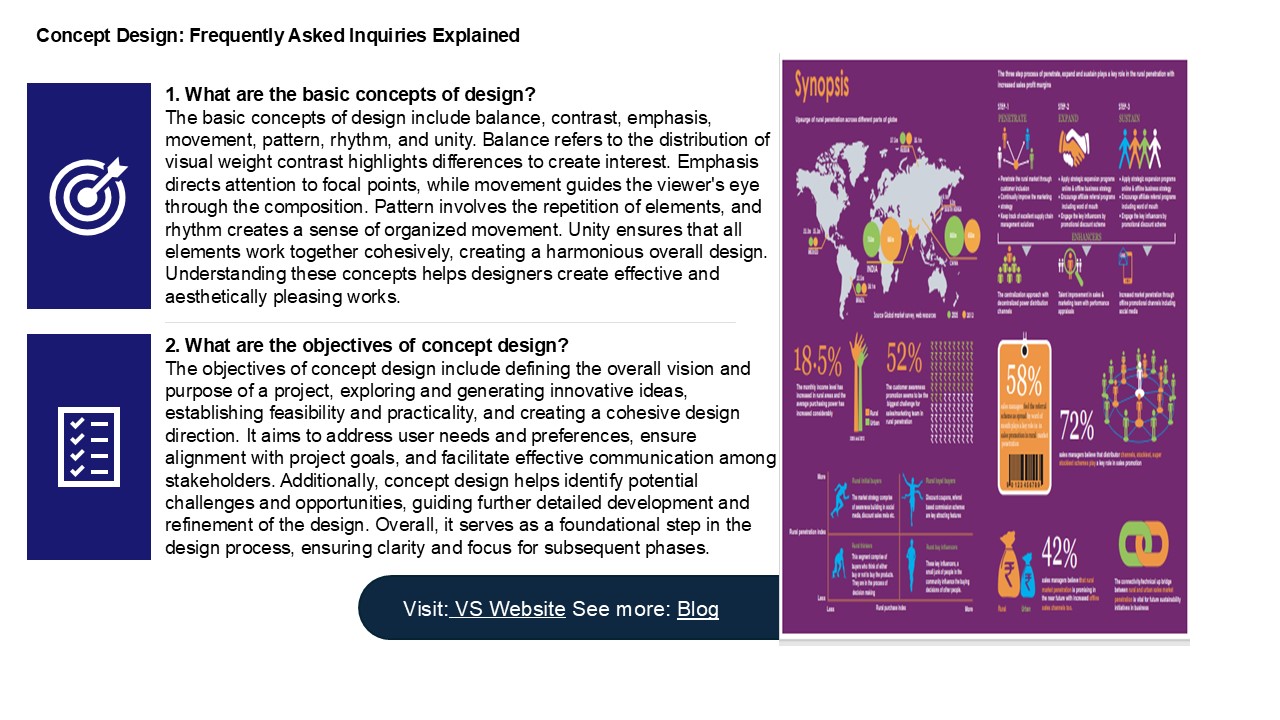Understanding Concept Design Sheets: Bridging Imagination and Practicality in Project Development
Title:
Understanding Concept Design Sheets: Bridging Imagination and Practicality in Project Development
Description:
A concept design sheet is a visual and written representation of ideas for a project, highlighting the creative aspects of design. Unlike regular design, which focuses on practical implementation, concept design allows for exploration of various forms, functions, and aesthetics. A concept design proposal formally outlines these creative ideas, explaining the reasoning behind design choices and how they meet project goals. Key design principles, such as balance, contrast, unity, and emphasis, guide this creative process. The main objectives of concept design are to generate innovative ideas, effectively communicate the vision, and lay a strong foundation for further development. By bridging imagination and practical application, concept design helps ensure successful project outcomes. –
Number of Views:7
Date added: 9 December 2024
Slides: 3
Provided by:
visualsculptors
Category:
How To, Education & Training
Tags:
Title: Understanding Concept Design Sheets: Bridging Imagination and Practicality in Project Development
1
Concept Design Frequently Asked Inquiries
Explained
1. What are the basic concepts of design? The
basic concepts of design include balance,
contrast, emphasis, movement, pattern, rhythm,
and unity. Balance refers to the distribution of
visual weight contrast highlights differences to
create interest. Emphasis directs attention to
focal points, while movement guides the viewer's
eye through the composition. Pattern involves the
repetition of elements, and rhythm creates a
sense of organized movement. Unity ensures that
all elements work together cohesively, creating a
harmonious overall design. Understanding these
concepts helps designers create effective and
aesthetically pleasing works.
2. What are the objectives of concept design?
The objectives of concept design include
defining the overall vision and purpose of a
project, exploring and generating innovative
ideas, establishing feasibility and practicality,
and creating a cohesive design direction. It aims
to address user needs and preferences, ensure
alignment with project goals, and facilitate
effective communication among stakeholders.
Additionally, concept design helps identify
potential challenges and opportunities, guiding
further detailed development and refinement of
the design. Overall, it serves as a foundational
step in the design process, ensuring clarity and
focus for subsequent phases.
Visit VS Website See more Blog
2
3.What is a concept design sheet? A concept
design sheet is a visual document that presents
ideas and elements for a project, often used in
fields like product design, animation, and video
games. It typically includes sketches, color
palettes, textures, and notes that convey the
overall vision and style. The sheet helps
communicate concepts to stakeholders, guiding the
development process and ensuring a cohesive
direction. It serves as a reference for designers
and helps in brainstorming, refining ideas, and
aligning the creative team on the projects
goals.
4. What is the difference between design and
concept design? Design refers to the overall
process of creating a product, structure, or
system, encompassing various elements like
functionality, aesthetics, and usability. Concept
design, on the other hand, is an early stage in
the design process that focuses on generating and
exploring ideas and solutions. It involves
developing initial sketches, models, or
prototypes to visualize and communicate the core
ideas and objectives. While design encompasses
the entire development cycle, concept design is
specifically about brainstorming and establishing
the foundational vision for a project.
5. What is a concept design proposal? A concept
design proposal is a document that outlines an
initial idea for a project, product, or service.
It typically includes sketches, descriptions, and
rationale behind the design, addressing the
project's objectives, target audience, and
potential challenges. The proposal serves to
communicate the vision to stakeholders, clients,
or decision-makers, helping them understand the
concept's feasibility and value. It may also
outline design processes, timelines, and budget
estimates, facilitating discussions and feedback
before moving into detailed design phases.
Ultimately, it acts as a blueprint for further
development and refinement of the idea.































